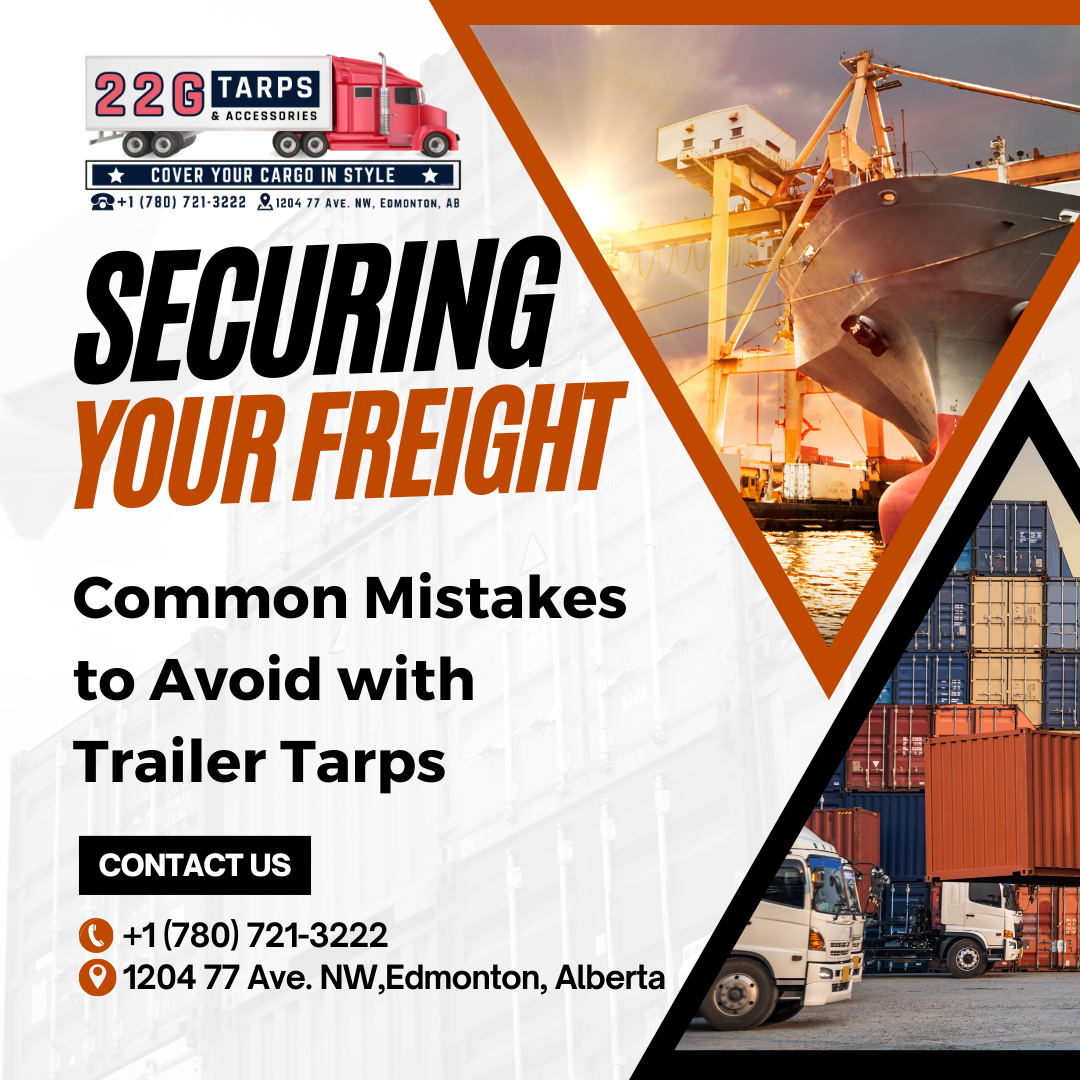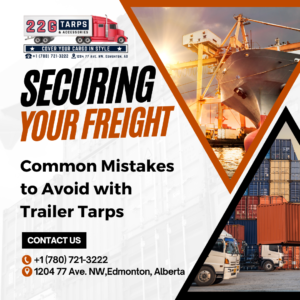
The workhorses of transportation, trailers quietly move everything from fruits to furniture over long distances. However, loading stuff onto a trailer requires more than merely packing it in and shutting the doors. One mistake might result in lost or damaged items, a logistical nightmare, and a careful dance between efficiency and protection. And 22G Brands trailer tarps are typically the unsung heroes of this dance.
These seemingly unassuming sheets of cloth are essential for safeguarding your priceless cargo. However, if trailer tarps are not used properly, they can become offenders rather than defenders, opening doors for malicious weather and sly thieves to take advantage of.
Let’s discuss some typical trailer tarp mistakes to avoid before you cover your trailer with a tarp and call it a day:
1. Ignoring pre-tarping inspections:
Consider constructing a home on flimsy foundations. That’s what occurs when cargo is incorrectly loaded and covered with tarp. Make sure your load is well distributed, heavy things are placed at the bottom, and sharp edges are sufficiently protected before you drape your tarp. This keeps the tarp from getting punctured, torn, or shifting cargo, all of which could reduce its effectiveness.
2. Taking Off Your Tarp:
Consider a tarp as the cape of a superhero. In order for it to perform its magic, it must cover everything. It would be the equivalent of exposing your superpowers to cut corners on tarp size or to leave spaces between the tarp and the trailer. The wind can rip away the tarp or perhaps pull the cover off completely, causing your carefully secured cargo to fall onto the road.

Secure Your Success: Tarp Up Knowledge Today!
3. Tying the Security Knot:
Knots can actually weaken the fabric and provide possible tear places, despite the fact that they look like the reliable companion of any tarp construction. Rather, use robust tie-downs such as bungee cords, ratchets, or straps to properly distribute the stress over the tarp’s grommets. Keep in mind that you don’t want to strangle the tarp, so go tight, but not too tight!
4. Disregarding the components:
Nature herself can be a fickle adversary. Rain can soak through gaps and harm your cargo, while the sun can bleach and degrade the tarp. For extended travel, choose waterproof and UV-resistant tarps; additionally, think about adding straps or sealants to exposed parts to further improve weatherproofing.
5. Losing the “Un-Tarping” Memory
It’s easy to imagine the tarp doing its job and leaving it on forever. But keep in mind that moisture that is trapped in your baggage might cause mold and mildew to bloom. Remove the tarp as soon as you get to your destination and let the space air out, particularly if you are carrying organic goods.
6. There Is No One Size Fits All:
Not every tarp is made equally. It would be like expecting a featherweight boxer to fight a heavyweight champion if you used a little tarp for a large trailer or a lightweight tarp for heavy goods. Pick tarps according to the dimensions and weight of your belongings, the kind of weather you expect, and how long your trip will take.
7. Disregarding upkeep and inspection:
Tarps require routine maintenance, just like any other heroic tool. Check your tarps frequently for rips, deteriorated grommets, and weak spots in the seams. Never be afraid to replace severely damaged tarps or sew even little tears. Recall that a minor repair expenditure now can avert a major hassle later on—not to mention a possibly catastrophic freight loss.
Bonus Advice: Make use of technology! Think about spending money on tarps that have built-in GPS tracking or sensors that keep an eye on the trailer’s humidity and temperature. With the use of this real-time data, you can prevent and safeguard your cargo by seeing possible issues early on.
You may turn these unassuming sheets into formidable friends in the fight for safe freight transportation. By avoiding these typical blunders and using best practices in trailer tarps,. Keep in mind that a little foresight and caution go a long way toward ensuring your goods reach their destination safely, freeing you up to concentrate on what really matters: operating your business profitably and efficiently.
Happy and safe transport!


